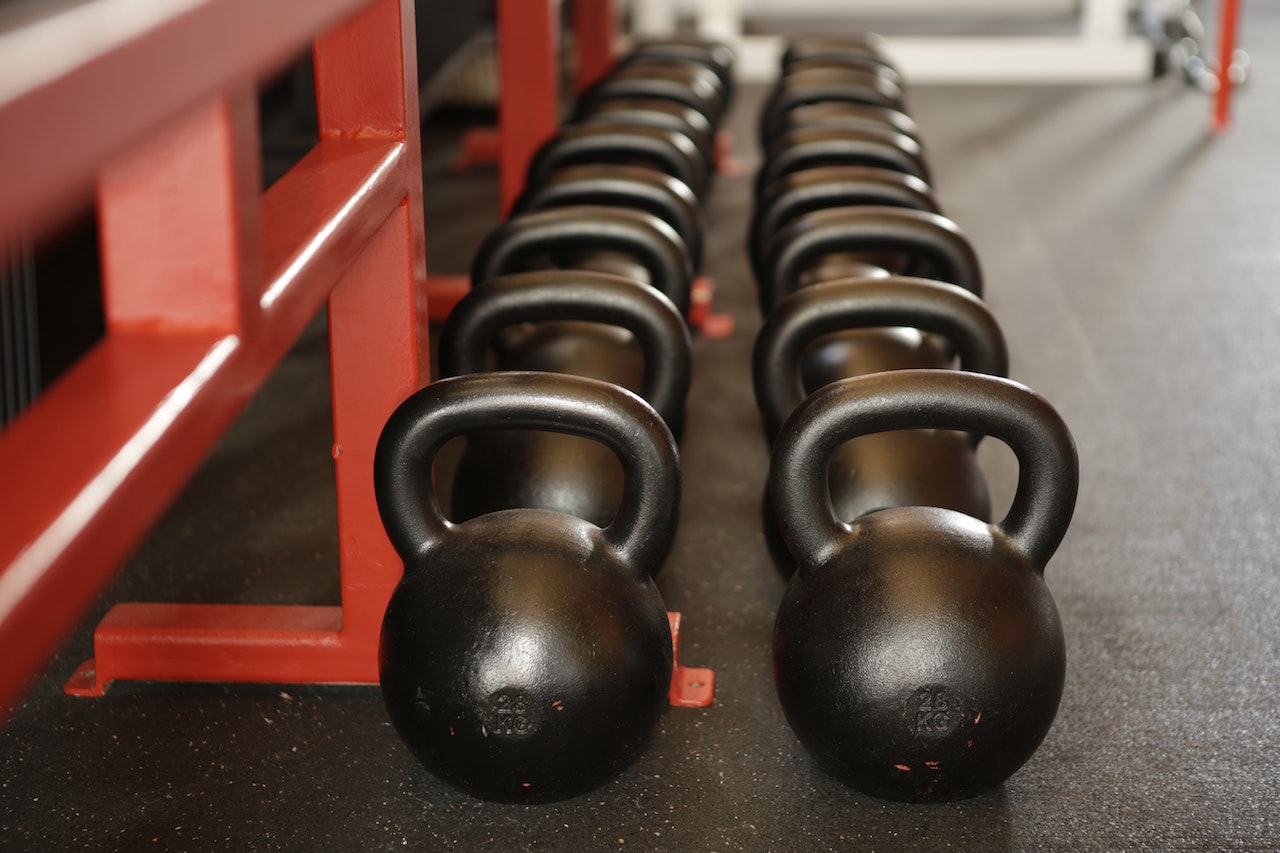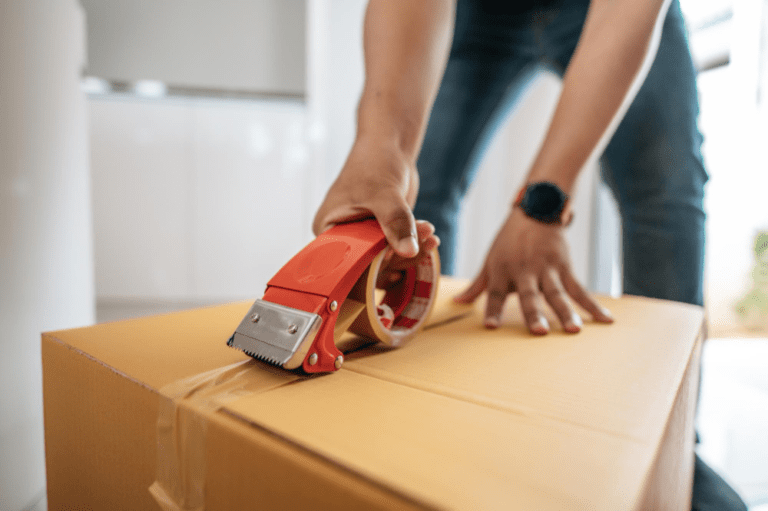Moving can be a daunting task, especially when it comes to packing heavy items like weights. Whether you’re a fitness enthusiast with a home gym or simply have a few dumbbells lying around, ensuring they are packed safely and efficiently is crucial.
At Friends Moving, we understand the challenges that come with moving such items. Over the past 15 years, we’ve assisted countless individuals in relocating their prized possessions, including weights, with utmost care.
In this comprehensive guide, we’ll share our expert insights on how to pack weights for moving, ensuring they reach your new destination in perfect condition. So, if you’re gearing up for a move and wondering about the best practices for packing your weights, you’ve come to the right place. Let’s dive in!
The Challenges of Moving Weights
Moving weights, be it a simple set of dumbbells or an intricate home gym setup, is not an endeavor to be taken lightly. The unique nature of these items, combined with their heft, can lead to a myriad of challenges if not approached with caution and expertise.
1. Potential for Personal Injury
- The Danger of Unsecured Weights: When weights are not packed securely, they can shift during transit. This unpredictable movement means that when you or a mover opens the box or container, a weight could potentially fall out. Such unexpected incidents can lead to sprains, bruises, or even more severe injuries.
- Strain from Improper Lifting: Without proper packing, weights might be distributed unevenly in a box, making it difficult to lift correctly and increasing the risk of back or muscle strains.
2 . Damage to the Weights Themselves
- Cosmetic and Structural Damage: Weights, especially those made of materials like cast iron or coated metal, are susceptible to scratches, chips, or cracks if they rub against each other without protective wrapping.
- Long-Term Wear: Repeatedly moving weights without proper care can lead to faster wear and tear, reducing their lifespan and aesthetic appeal.
3. Risk to Other Items
- Collateral Damage: A weight that isn’t secured can become a projectile inside a moving truck. This not only risks damaging the weight itself but can also shatter, dent, or break other belongings.
- Compromised Integrity of Boxes: Heavyweights can strain and tear improperly chosen or packed boxes, leading to a cascade of items spilling or getting damaged.
4. Increased Moving Costs
- Space Inefficiencies: Weights that aren’t packed compactly can consume more space than necessary. This inefficiency might necessitate larger moving vehicles or even multiple trips, escalating costs.
- Potential for Additional Repairs: Damages caused by improperly packed weights might lead to repair or replacement costs for other items.
5. Difficulty in Handling
- Challenges in Lifting: Weights that are packed haphazardly or in boxes too large can be awkward to lift, slowing down the moving process and increasing the risk of mishandling.
- Time Delays: If movers or helpers struggle with weight distribution, it can lead to longer loading and unloading times, potentially delaying the entire move.
6. Potential Vehicle Damage
- Interior Damages: Weights that shift inside a moving vehicle can dent or scratch the interior, leading to potential repair costs.
- Safety Concerns on the Road: If weights are not secured and shift dramatically, they can throw off a vehicle’s balance, especially in smaller moving vans or cars, posing a risk during transit.
By understanding and addressing these challenges, one can ensure a safer and more efficient moving process for both the weights and other belongings.
Read More: How to pack dishes for moving without paper
Materials You’ll Need
When it comes to moving weights and gym equipment, the right packing materials are crucial. They not only protect your valuable items but also ensure the safety of everyone involved in the moving process.
Using the appropriate materials can make the difference between a smooth transition and a day filled with broken items and frustration. Let’s explore the essential packing materials you should have on hand:
- Sturdy Boxes: Opt for double-walled or heavy-duty boxes. These are designed to handle heavier items without buckling under pressure. Ensure they’re in good condition without any tears or weak spots.
- Bubble Wrap: This provides cushioning for your weights, preventing scratches or dents. Wrap each weight individually, especially the ones with chrome or polished finishes, to avoid damage during transit.
- Packing Tape: High-quality, durable packing tape ensures that your boxes remain sealed throughout the move. It’s wise to double-tape the bottom of boxes containing heavy items for added security.
- Packing Paper: Useful for wrapping smaller weights or filling gaps in boxes. This prevents items from moving around and potentially causing damage.
- Stretch Wrap: Ideal for bundling together barbell rods or multiple dumbbell handles. It keeps them organized and prevents them from rolling around.
- Labels and Markers: Clearly label each box with its contents and handling instructions. This not only helps with the organization but also alerts movers to handle boxes containing weights with extra care.
With these materials at your disposal, you’re well-equipped to ensure that your weights and gym equipment are packed securely and ready for a safe journey to your new home.
Step-by-Step Guide on Packing Dumbbells
Dumbbells, though compact, require meticulous attention when being prepared for a move. Their weight and shape can pose challenges, but with the right approach, you can ensure they’re packed safely and efficiently.
Whether you have a pair of light dumbbells or a complete set ranging in weight, following a systematic process is key. Here’s a detailed step-by-step guide to help you pack your dumbbells with precision:
Cleaning and Inspection
Before packing, it’s essential to clean each dumbbell. Use a damp cloth to wipe away any sweat, dust, or grime. This not only ensures cleanliness but also allows you to inspect each dumbbell for any existing damage or wear. After cleaning, ensure the dumbbells are completely dry to prevent rusting or mold growth during storage or transit.
Protection and Wrapping
Begin by wrapping each dumbbell individually in bubble wrap. This provides a cushioned layer, preventing scratches or dings. Secure the wrap with packing tape to ensure it stays in place. For dumbbells with chrome or polished finishes, consider adding an extra layer of packing paper over the bubble wrap for added protection.
Boxing and Securing
Use sturdy, double-walled boxes for packing dumbbells. Ensure the box can comfortably fit the dumbbell without it pressing against the sides. Place a layer of bubble wrap or packing paper at the bottom of the box for added cushioning. After placing the wrapped dumbbell inside, fill any remaining space with more packing material to prevent movement.
Labelling and Instructions
Using a marker, label the box with “Dumbbells” and indicate the weight if you’re packing multiple sets in separate boxes. Mark the box as “Heavy” and “Handle with Care” to alert movers or anyone assisting with the move about the contents and to ensure safe handling.
By following this comprehensive guide, you can be confident that your dumbbells are packed securely and ready for their journey to your new workout space.
Read More: Moving from Vero Beach to Panama City: Your Ultimate Guide
Packing Weight Plates and Barbells
When it comes to packing weight plates and barbells, a systematic approach is essential to ensure their safety during transit. Start with the barbells. If they can be disassembled, begin by unscrewing any end caps or collars. Separate the weight plates from the bar.
This not only makes the items easier to pack but also reduces the risk of damage caused by parts rubbing against each other. Once disassembled, each weight plate should be wrapped individually. Using bubble wrap or thick packing paper, ensure that the entire surface of the plate is covered to prevent scratches or dents.
For barbells, wrap them in bubble wrap, focusing on areas where there might be grips or threads to ensure they’re protected. Boxing your weight plates and barbells requires careful consideration. Choose sturdy, double-walled boxes that can handle the weight.
For plates, consider using smaller boxes so that you can stack them according to size, ensuring that the heaviest plates are at the bottom. Fill any gaps with packing material to prevent movement.
Safety Tips to Remember
Moving heavy gym equipment like weight plates and barbells demands not only attention to the items but also to personal safety. Here are some crucial safety tips to keep in mind:
- Avoid Overpacking: Always choose the right size box. Overloading can cause the box to break, risking damage to the items and potential injury.
- Distribute Weight Evenly: When packing multiple items in one box, ensure the weight is distributed evenly to prevent tipping or difficulty in handling.
- Proper Lifting Techniques: Always lift with your legs, not your back. Bend at the knees and keep the item close to your body to reduce strain.
- Secure Transportation: Ensure that weight boxes are placed securely in the moving vehicle. They should not shift during transit, which can throw off the vehicle’s balance.
- Wear Appropriate Footwear: When moving heavy items, wear closed-toed shoes with a good grip to prevent any accidental drops on your feet.
- Ask for Help: If an item feels too heavy or awkward, always ask for assistance. It’s better to be safe and get help than risk an injury.
Remember, while ensuring the safety of your items is crucial, your personal safety and that of those helping you move should always be the top priority.
Why Hiring Professionals Like Friends Moving Can Help
Entrusting your moving needs to professionals, especially when it involves heavy and valuable items like gym equipment, can be a game-changer. Friends Moving, with its years of experience and commitment to excellence, offers several advantages that can make your move seamless and stress-free:
- Expertise in Handling: Our team is trained to handle heavy items, ensuring they’re moved without damage or risk of injury.
- Specialized Equipment: We use the right tools and equipment, from heavy-duty dollies to specialized packing materials, ensuring the safe transit of your weights and gym equipment.
- Full-Service Packing: Our comprehensive packing service means you don’t have to worry about sourcing materials or the intricacies of packing. We handle it all.
- Time Efficiency: With our expertise, what might take you hours can be done more quickly, ensuring a swift-moving process.
- Guaranteed Safety: Our guarantees ensure that in the rare event of damage, you’re covered. It’s a peace of mind you might not have when moving on your own.
- Customer Satisfaction: At Friends Moving, our top priority is ensuring our customers are satisfied, from the initial consultation to the final unloading.
Read More: The Importance of Proper Labelling When Moving in Vero Beach
Common Mistakes to Avoid
When packing and moving, especially heavy items like weights, it’s easy to overlook certain aspects or cut corners. However, some common mistakes can lead to damage, increased costs, or even injury. One prevalent error is not using the right packing materials.
It might be tempting to wrap weights in whatever is handy or place them in any available box, but this can lead to damage or the box breaking under the weight. Proper materials, like bubble wrap and sturdy boxes, are essential. Another oversight is neglecting to label boxes.
While it might seem obvious to you what’s inside, for anyone helping you move, it’s a mystery. Clearly labeled boxes ensure proper handling, especially for heavy or fragile items. Additionally, simply placing weights inside a box isn’t enough. If they’re not secured, they can move around during transit, potentially damaging the box or other items.
It’s crucial to ensure that weights, especially heavy ones, are snugly packed with no room to shift, using additional packing materials as necessary. Avoiding these common mistakes can make your move smoother and safer.
Conclusion
Packing weights and gym equipment might seem straightforward, but as we’ve explored, it requires meticulous attention to detail and the right materials. Ensuring that weights are packed correctly is paramount not only for the safety of the items but also for everyone involved in the moving process.
It’s about safeguarding your investments and ensuring they reach their new destination in pristine condition. If you’re feeling overwhelmed or unsure about any aspect of your move, remember that professionals like Friends Moving are just a call away.
With our expertise, resources, and commitment to customer satisfaction, we’re here to make your move as seamless and stress-free as possible. So, as you gear up for your next move, reach out to Friends Moving for assistance. We’re here to help every step of the way.
FAQs
It’s recommended to use double-walled or heavy-duty boxes for weights to ensure they can handle the load and prevent any breakage.
Ideally, reach out at least two weeks in advance. However, we do accommodate last-minute moves based on our schedule.
Yes, disassembling barbells makes them easier to pack and reduces the risk of damage during transit.
Absolutely! We offer full-service packing, which includes providing all necessary packing materials for your move.
Friends Moving prides itself on careful handling, but in the rare event of damage, our guarantees ensure that you’re covered.





